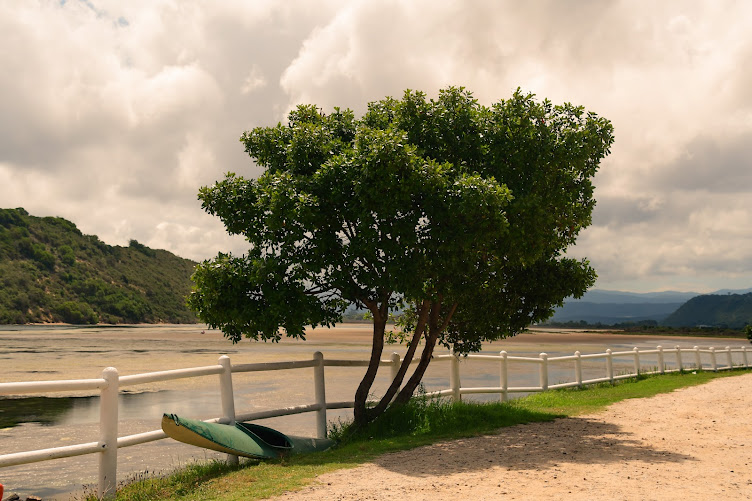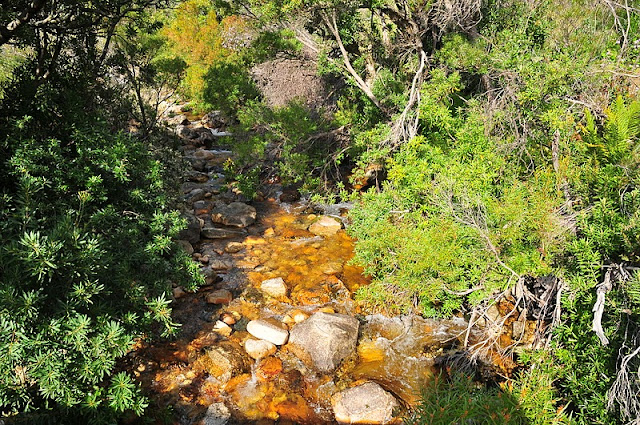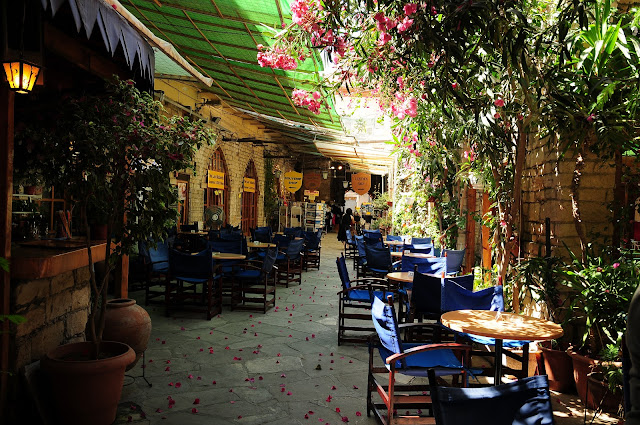Cyprus- Land of Contrasts
“Wherever you may go, always try to arrive with no expectations – then everything becomes an experience to enjoy, savour and treasure. Accept that a foreign country is different and it will enrich and broaden your outlook on life!”
Cyprus – an island of contrasts – the old, the new, the developed and the untamed. Our holiday in Cyprus was determined not so much by choice as by what RCI had available for us for the dates chosen. The visa requirements for South Africans travelling to Cyprus are fairly stringent and both our visas took nearly 3 weeks with lots of calls to Cyprus asking for info before the local Cyprian embassy was happy. So be warned and apply in good time! But the destination sounded exciting although there is not a vast amount of information on the internet so we arrived there not really knowing what to expect.
We landed in Larnaca, collected our car (luckily, the driving is on the left as in SA) and drove to Pafos where were booked to stay at the Panaretti Pafos Resort. Cyprus has an amazing amount of hotels and all seem to be of a good standard so you can be spoilt for choice. We were happy with our smaller resort; the rooms were good, spacious and the staff very friendly and helpful.
Cyprus, we discovered appears to be “Britain by the Sea” as one is hard-pressed to find a genuine Cypriot in Lower (Kato) Pafos! The British tourists flock to Cyprus in their thousands and many appear to spend their 7 days lounging either on the hotel loungers in the sun or on the beach loungers in the sun! Nothing wrong with that if one wants total relaxation but we wanted to discover what Cyprus was all about so took to the mountains, the beaches and
the cities
At first sight Cyprus appears ugly with scrub vegetation, flat roofs cluttered with thousands of solar panels and water tanks, and development in the most unlikely places, scarring the landscape even further. Golf Estates are being built and are cause for concern with the locals as water is in short supply in Cyprus. However, Cyprus has much to offer the visitor – you just need to look beyond some of the dreary landscape. The absolutely best beer, Keo, we found the best Mousaka in all in Pafos, the Troodos Mountains, a safe environment, nightlife, water-sport facilities, golf, hikes, brilliant swimming and sunny blue skies.
 Limassol
Limassol
One of the many Cyprus Cats!
The bigger cities like Limassol (Lemesos) Population approx. 170,000 and Nicosia (Lefkosa) Population approx. 210,000 are more authentic, very busy and thronged with locals as well as tourists. We strolled along the palm-lined seafront in Limassol which ends in the harbour where older fishing boats as well as more modern yachts are docked. We found a lovely arcade of small shops, a virtual oasis in the heat of the day, where we lunched and watched the world go by.
Nicosia, a 10,000 year old city, was a much longer drive from Pafos but we decided it would be worth a visit. However, we got the fright of our lives whilst walking down Ledra Street, to be suddenly halted by a policewoman demanding our passports. Whoa, are we at the border to Northern Cyprus we asked (there is no barrier at all) only to be told “Yes” rather curtly. We had been warned not to go into Northern Cyprus as we were headed for Greece later in our trip and the Greeks and Turks do not see eye to eye! Whilst the locals appear to walk between the North and South boundaries quite freely now (with passports) and the foreigners were also entering, we decided to err on the side of caution rather than jeopardise our next 3 weeks by a walk down the same street but ruled by the Turks! Nicosia is now the only remaining city in the world that is divided, and in this day and age, it seems a great pity that it should remain so. The border is basically a Green Line on the map so it is difficult not to stray if it were not for the Police guarding strategic cross-over points.


Our safer option was to go to the 11th floor of the Shacolas building (Ledra Lookout Point) for amazing views (and lots of information) of Nicosia.
The President of Cyprus, Demetris Christofias, and Turkish Cypriot leader Mehmet Ali Talat have recently agreed to restart peace talks aimed at reunifying the island. This challenge has defeated generations of peacemakers. A UN peace process ground to halt in 2004, and a programme of confidence-building steps agreed in 2006 has brought few practical results.
The split occurred in 1974, when a Greek-inspired coup prompted a Turkish invasion of the northern third of the island. The Turkish Republic of Northern Cyprus, declared in 1983, is recognised only by Turkey.
A trip into the Troodos Mountains is a must, however try and find a good map first! We discovered that our local shop had them on the last day of our stay! We got lost many times as the mountain area is quite large and we battled with the tiny map that we had. The roads are very twisty with hairpin bends at times and seem to go in circles quite often so suddenly you will find yourself in the same village again!
We visited Pedoulas where we bought the most delicious cherries we have ever tasted, from an old man selling at the roadside. Very clever on his part as the village had about 10 mini- markets selling cherries as well! Needless to say, this village is famous for its cherries!
We also visited Prodromos which is the highest settlement in Cyprus and is known for its apple and cheery orchards.
The village of Galata’s claim to fame appears to be a few old houses in the main street with overhanging balconies. We did not feel it worth the detour!
Kakopetria - the translation of Kakopetria means “evil rocks”. Many of these mountain villages appeared very deserted as it was not yet full summer when the Cypriots arrive to holiday away from the heat in the cities or the tourists are out in force. The shop-keepers appear desperate to make a sale and one wonders how they survive.
During 2007 a huge fire in central Cyprus destroyed several holiday homes and forced the evacuation of at least two villages. At the time, Agriculture Minister Photis Photiou described the fire as "a big catastrophe". He said the blaze threatened the Troodos forest - one of the most scenic areas of the eastern Mediterranean island.
Cultivated vineyards cover a large percentage of Cyprus’ mountainous land,
from sea level upwards. Most vineyards are located in the southern
Troodos area. Wine drinking appeared to play an important role in daily life, as illustrated on the mosaic of Kato Pafos, dating back to the Roman times. There are approx. 23, 500 hectares of vines under cultivation, with the annual production of 200 million kilos of grapes.
We did not have enough time to visit all the villages, all the famous Painted Churches, or the Monasteries – so plan your time well! The mountains are worth at least a 2 or more night stays.
Omodos has a lovely cobbled main square which is surrounded by small shops and restaurants. The surrounding streets are quaint, twisty and cobbled and make one want to carry on exploring to see what is around the next corner. The Timiou Stavrou Monastery was closed so we could only view this from the outside. Unfortunately, Omodos was our last stop so we could not linger too long as we did not want to be on the mountain roads after dark.
The highlight of our visit was to the seemingly last unspoilt wilderness area in Cypress, the Akamas Peninsula. We visited Lara Bay, where you can view information boards on the Turtle Conservation methods being used. Turtles come ashore to lay their eggs and leave their “imprints” on the beach once they hatch and make their way to the water. It is vital that the area remains largely undisturbed as Loggerheads mature at approx. 15-20 yrs and Green Turtles at approx.25-30 yrs.
95 Green turtles have been tagged as they are the most endangered and found mainly in Cyprus.
Lara Bay beach is long and deserted so a good place to escape the crowds! The mountain roads are gravel, you suddenly come across a goat shed with the lovely name of “Villa Sea View”, a goat-herd and his flock with the beautiful sound of bells tinkling, a farmer with his tractor ploughing his fields, a French couple with their petrol tank on empty (we wonder if they ever made it!), donkeys in a field below, truly a serene, beautiful and bumpy drive!
We followed this with a leisurely lunch in the small, cute harbour town of Latsi – who could wish for more! One hopes that the very aggressive development taking place all over Cyprus will allow this wilderness area to remain unscathed.
Quote overheard in Skiathos “Have you been to Cyprus recently? No? Well they are building rabbit hutches and selling them to the Brits as luxury villas” Personally, we also felt that the developments are scarring the landscape as there appears to be no proper planning involved. However, many of the older Cypriot homes are in a state of disrepair, with crumbling walls and broken down doors and windows. It is a fairly common sight to see a modern building next to a crumbling, yet inhabited, ruin.
Cyprus is also known for its beaches and we managed to sample a few. However, please don’t compare the Cyprus beaches to South Africa’s kilometres of white, sandy beaches – you could be disappointed – brown or black sand or pebbles – the Mediterranean water and the constant sunshine are the attractions – the sea is crystal clear and an experience not to miss!
Aphroditi's Beach
Restaurant at Governer's Beach
Governor’s beach – a lovely, quieter spot with a hotel right on the beach for a leisurely lunch.
Pissouri – this hilltop village appears to have managed to retain its traditional Cypriot character, while adapting to welcome visitors, and the money that they bring, to the village. The village itself stands on a hilltop with a sea level difference of 250 metres The village centre has been preserved with Governmental assistance and a village square, which is surrounded by small family run restaurants and cafes, is extremely popular among both locals and foreign visitors. Pissouri Beach is worth a stop for a swim!
Coral Bay – Lots of sun beds with a Taverna on the beach
Lara Bay – deserted but for 1 couple at the time of our visit!
Latsi – a beach close to the town’s harbour with the ever-present sun umbrellas and loungers.
Aphrodite’s Rock - this scenic stop for all the coaches is a MUST for a swim – simply divine!
“Petra tou Romiou’, a rock off the shore along the main road from Paphos to Limassol, has been regarded since ancient times as the birthplace of Aphrodite, goddess of love and fertility.
"According to ancient tradition, Aphrodite was born from the waves on the site off the coast of Cyprus. In his Theogony (178-206), Hesiod provides the following dramatic account of the event: "Chronos took the great long jagged sickle; eagerly he harvested his father's (Zeus') genitals and threw them all off behind.... The genitals...were carried for a long time on the waves. White foam surrounded the immortal flesh, and in it grew a girl... her name is Aphrodite among men and gods, because she grew up in the foam (aphrizo).
Petra tou Romiou means "the Rock of the Greek" and does not refer to Aphrodite but to another myth, that of the Byzantine hero Dighenis who threw the rocks at pirates to protect his lady"
Stories and history abound in Cyprus, some more plausible than others!!
And last but not least, our local village, Kato Pafos. The town has much to offer - Pafos harbour with its ancient castle, the huge Kato Pafos Archaeological Park with its mosaics depicting Dionysos, the God of wine, beautiful churches, a UNESCO listing in its world cultural heritage list, a lively, busy Waterfront, lots of one way streets to get lost around (the tip is to WALK not drive!), many restaurants, too many
tourist shops!
Time was too short (7 days) to enjoy but a sample of all that Cyprus has to offer. ….. As long as you don’t mind hordes of British tourists, book your plane ticket!
Some pertinent facts
Euro Currency adopted on 1/01/2008
Cyprus is the 3rd largest island in the Med at 9251 square kilometres
International Airports at Lanarca and Pafos are currently served by 32 International Airlines
Approx. 70 shipping lines include Cyprus in their schedules
Over 300 days of sunshine a year!
Mild winters, except in the mountains, where skiing is possible in January/February.
Tourism presently accounts for 40% of the Gross National Product.
Solar Panels for Water heating are required on all new buildings
Wikipedia figures state Southern Cyprus population approx. 784,000 and Turkish Cyprus approx. is 264,000
Current Prices:
Breakfast up to Euro 6.00
Lunch from Euro 6.00 per dish,
Dinner from Euro 8 per dish
Water E.50, Beer Euro 2.00
Beach Loungers from Euro 4 – Euro 8
Car Hire – Small Euro 210.00 per week
Check out:
© Judelle Drake
For Accommodation Cape Town, South Africa
www.bradclin.com
Please share - if you did not enjoy this post .....Shhh - but please still share!
Thanks!









































































